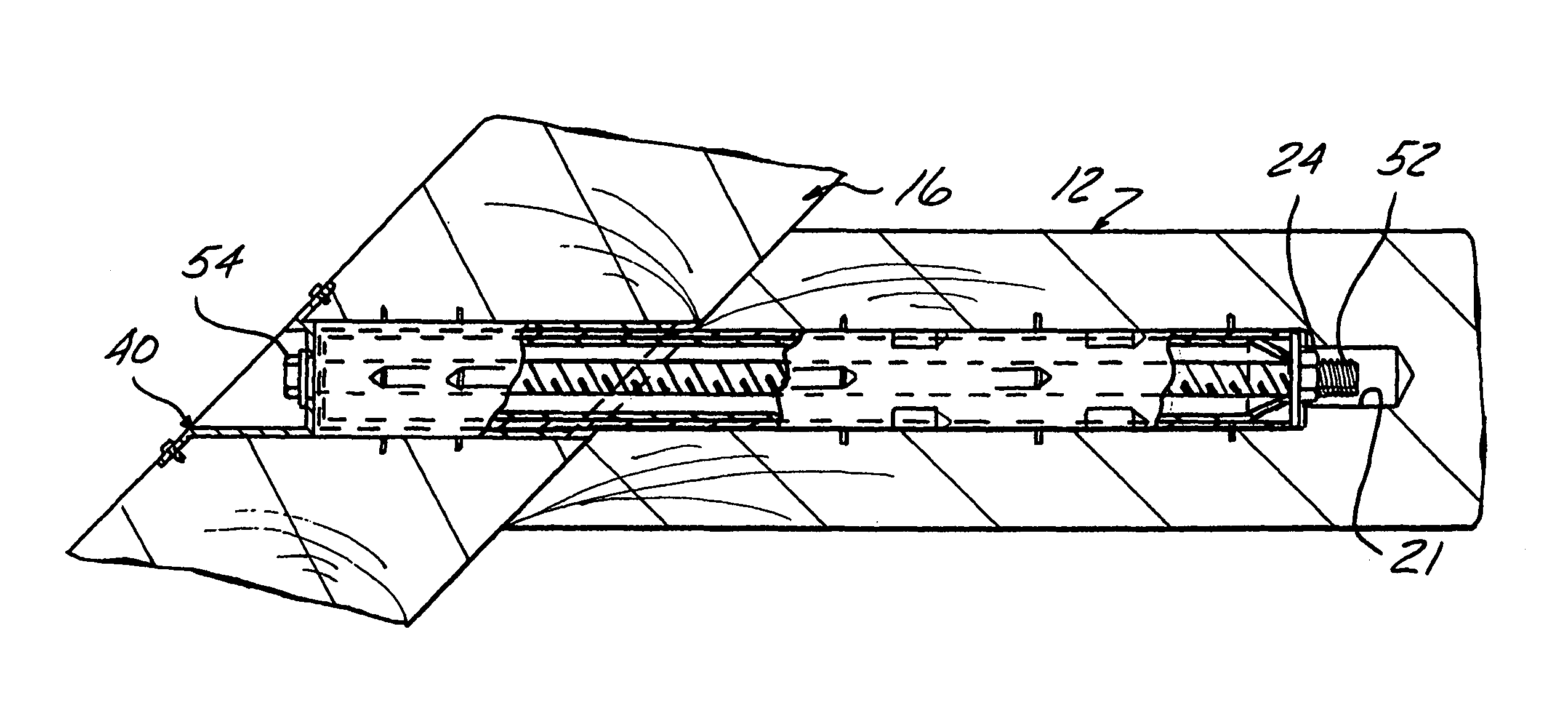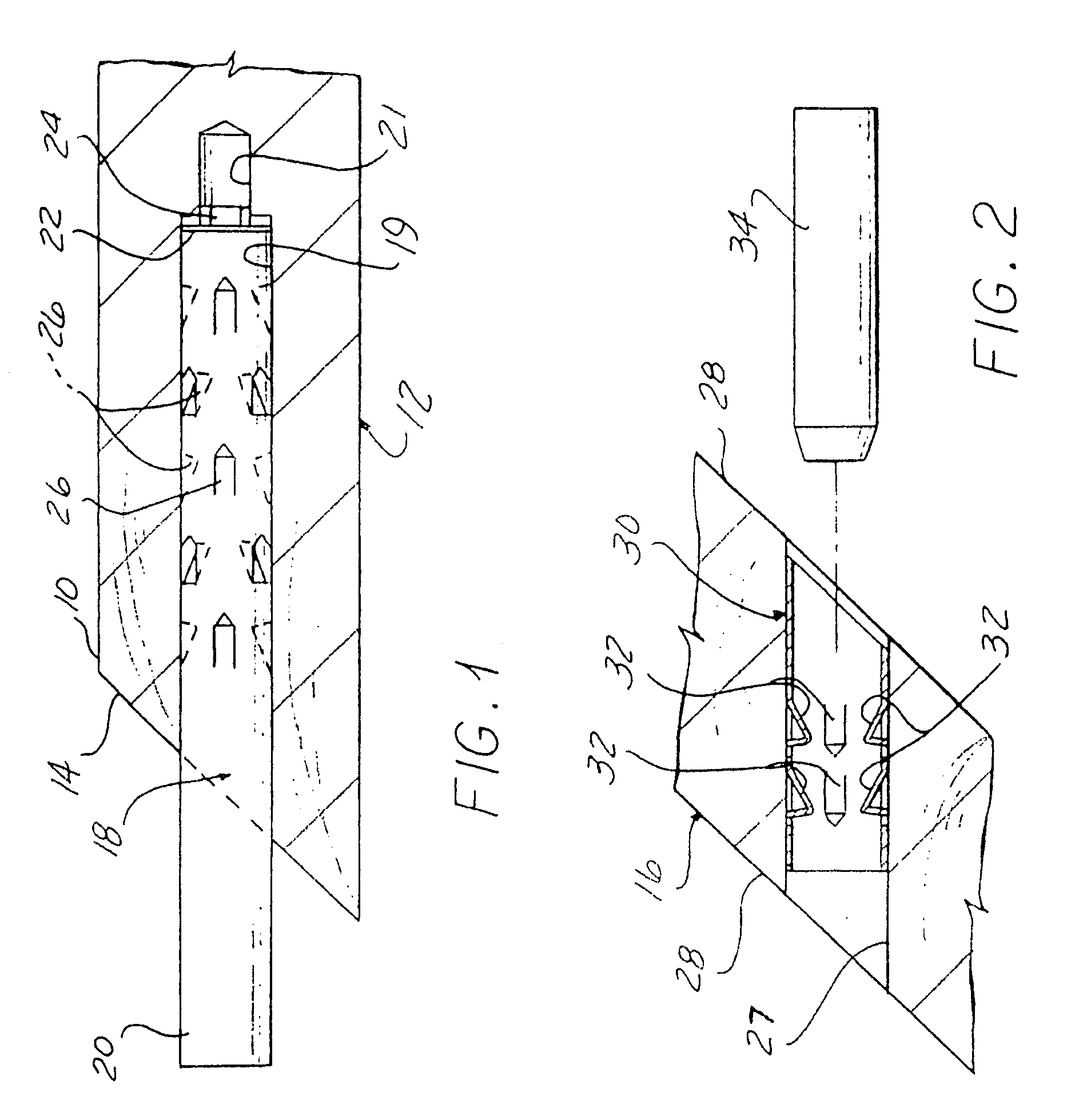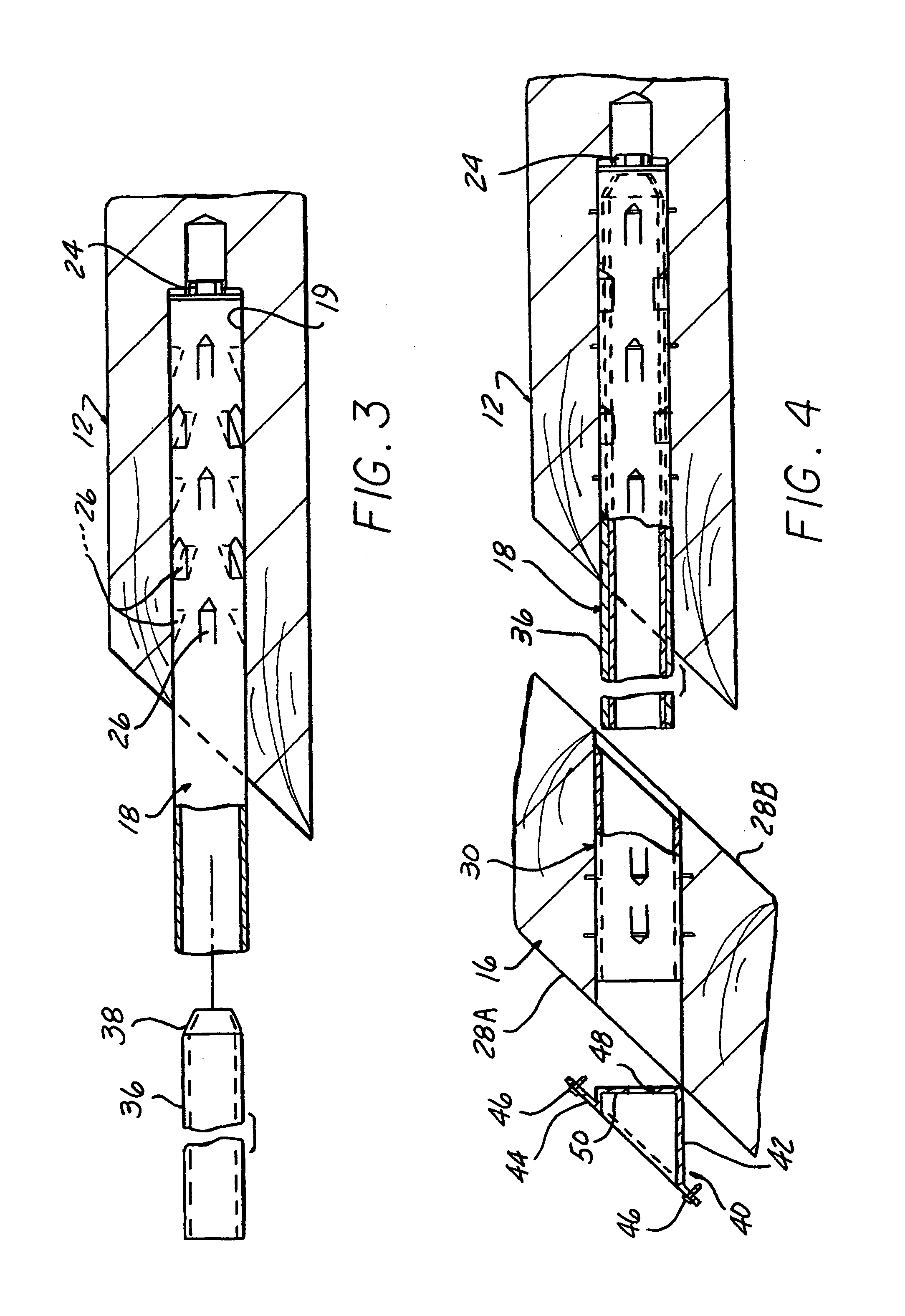Structural member joints
a technology of structural members and joints, applied in the direction of rod connections, couplings, building repairs, etc., can solve the problems of insufficient holding power of screw threads in wood or other soft materials, and insufficient strength of joints
- Summary
- Abstract
- Description
- Claims
- Application Information
AI Technical Summary
Benefits of technology
Problems solved by technology
Method used
Image
Examples
Embodiment Construction
[0038]In the following detailed description, certain specific terminology will be employed for the sake of clarity and a particular embodiment described in accordance with the requirements of 35 USC §112, but it is to be understood that the same is not intended to be limiting and should not be so construed inasmuch as the invention is capable of taking many forms and variations within the scope of the appended claims.
[0039]Referring to the drawings, and particularly FIG. 1, an end 10 of a first wood member 12 such as a log, has the face 14 cut at an angle corresponding to the angle of a joint to be made with a second wood member 16 (FIG. 2).
[0040]A hole 19 is drilled into the face 14 in a direction aligned with the longitudinal axis of the member 10.
[0041]A first metal sleeve 18, preferably of steel which is galvanized or otherwise rust protected is pressed into the hole 19.
[0042]The sleeve 18 is longer than the hole 19 so that a substantial segment 20 thereof protrudes out of the h...
PUM
| Property | Measurement | Unit |
|---|---|---|
| diameter | aaaaa | aaaaa |
| holding power | aaaaa | aaaaa |
| strength | aaaaa | aaaaa |
Abstract
Description
Claims
Application Information
 Login to View More
Login to View More - R&D
- Intellectual Property
- Life Sciences
- Materials
- Tech Scout
- Unparalleled Data Quality
- Higher Quality Content
- 60% Fewer Hallucinations
Browse by: Latest US Patents, China's latest patents, Technical Efficacy Thesaurus, Application Domain, Technology Topic, Popular Technical Reports.
© 2025 PatSnap. All rights reserved.Legal|Privacy policy|Modern Slavery Act Transparency Statement|Sitemap|About US| Contact US: help@patsnap.com



